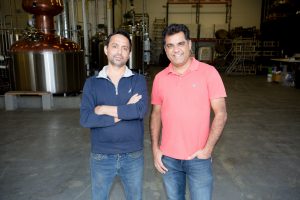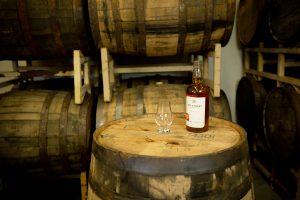A Chat With The Co-Founder And CEO Of San Jose’s Single Malt-Maker
By Richard Thomas
When asked how he got into whisky, Virag Saksena tells a story of his father letting him try a little when he was just five years old, in hopes of inculcating a lifelong dislike for drinking it. Obviously, that bit of parental psychology backfired badly. After partnering with Vishal Gauri and some years of experimenting privately, the pair opened the 10th Street Distillery in San Jose, California.
Initially the pair modeled their malt whiskies around the Scottish model, but lately they have moved towards drawing on their Northern California location and are working towards developing a sense of terroir. That shift was as good a reason as any to reach out to Saksena and see what was up on 10th Street in the midst of the pandemic summer of 2020.
RT: There are a handful of distilleries around making American single malts that are pointed at the Scotch industry in some way or another, but these are invariably taking that model and putting some manner of riff on it. You, on the other hand, seem to be doing very Scotch-style malt whisky in California. Are you trying to stick close to Scotch or is that just your launch pad?
VS: We wanted to craft great Single Malts and believed that you must learn the craft before you can innovate. Our first product was a peated single malt inspired by Scotland; however, our second product, STR, uses different barrels to give a more bourbon feel. We have since then introduced expressions finished in California wine casks and are working on blends with more traditional American grain whiskies.
RT: You came from a homebrewing background and Gauri is a chemical engineer, and from what I understand you spent five years in what was essentially home distilling, trying to develop a whisky you liked before you even started looking for a space to establish your commercial distillery. Tell us about those five years of lead time: what were some of your failures, what exactly were you looking to achieve before setting out to build 10th Street, and when did you know you were on the right track?
VS: We wanted to make a whisky which reflected its terroir. So, there were a lot of unanswered questions.
What is the influence of the Bay Area climate/temperatures/water on the mashing/fermentation/aging? What level of peat will work well in the malt? Which yeast should we use? Where should we take the cuts for the hearts? What types of casks will work well? How long will it take to age a whisky which you can enjoy? Should we try smaller casks? Is it really possible to age whisky in days using ultrasonic/light/heavy metal/agitation?
Since we were not using a consultant to advise us on a recipe, we resorted to trial and error to figure out what works and what does not. The most frustrating part was that it takes months and years to even see an early indication for every experiment before you can start tweaking the parameters. The list of failures is long and distinguished, but what we discovered was that you must focus on the fundamentals. There are no gimmicks like ultrasound aging or wood chips in our whisky. Our mash, fermentation and distillation are targeted at creating a clean spirit that ages well in full sized casks.
RT: 10th Street is a newcomer to craft whiskey, and entering a pretty crowded field. What were your challenges in getting the distillery off the ground?
VS: There were small hurdles; it took us one year to find a suitable site for distillery, in a city that wanted a distillery. The yeast we wanted wasn’t available in US, initially. While these were minor impediments, the biggest challenge is the same as any emerging spirits brand: getting distribution in the three-tier system. Not only are you selling your brand to the consumers, you are selling to the retailers, and you are selling to the distributors. We were lucky enough that a well reputed small distributor engaged with us in California. Even when you have acclaimed products that have won multiple double golds and “best in class” awards, getting distribution across states continues to be our biggest challenge.
RT: How are you distinguishing yourself from other Northern California distilleries and from the wider world of craft distilleries making Scots-style whisky?
VS: Our objective is not to make Scots-style whisky but to make great whisky. Great single malts are made globally: Japan, India, Taiwan, not just Scotland. Our objective is to make a whisky which reflects our region. Do for whisky what has already been done for wines in California. In the end, the proof of the pudding is in the eating. Do you enjoy drinking our whisky and want it to be a part of your collection to be enjoyed again and again, not just a gimmick.
RT: The pandemic has knocked everyone in this business for a loop. What happened with your outfit?
VS: We were approached by the city and shifted focus to making hand sanitizer to support the first responders and essential businesses. As that demand recedes, we will go back to our core business.
RT: Thus far you have a peated malt and what reads like an ex-bourbon barrel style, unpeated malt. You mentioned drawing on local resources, so what local casks might you employ in the future?
VS: We released a whisky finished in California port casks for the Holidays last year and are working on a whisky finished in California Pinot Noir casks.
 The Whiskey Reviewer A World of Whiskey, Poured Every Weekday
The Whiskey Reviewer A World of Whiskey, Poured Every Weekday


